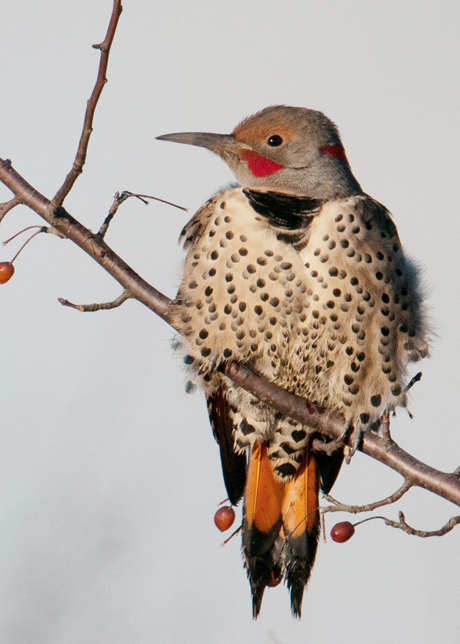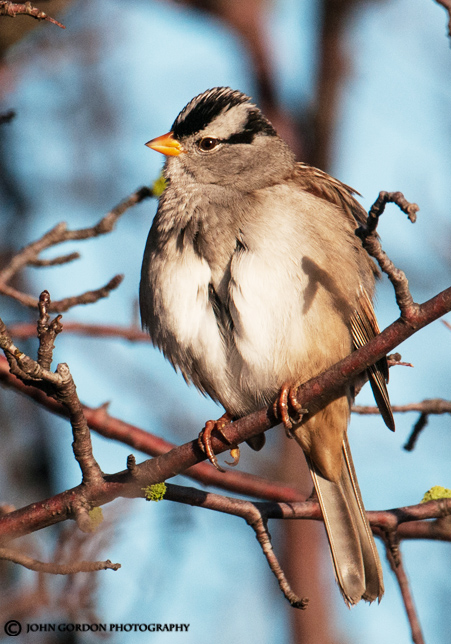Dec 30th 2012 Langley B.C. Foggy with sun in the afternoon.
Images from the Langley, Surrey and White Rock Audubon Christmas bird count. These are mainly record shots, however I do really like the Golden-crowned kinglet. A big thanks to group leader Anne Gosse for sharing her expertise that made these images possible.So what to say as the year comes to a close. The blog has been a great help to keep me organized in both my record keeping (it is so easy to forget details) as well an outlet for my birding exploits.
For those of you who have been kind enough to make comments, I thank you. Although there are too many people to thank here, a special thanks should go to all the members of the Langley Field Naturalists, to Al and Jude Grass and to Russell Cannings (for pointing out the location of a Yellow-breasted chat) for all their helpful advice. And last but not least all the dedicated birders and photographers who have helped me along the way.
HAVE A WONDERFUL 2013
 |
| Male Golden-crowned kinglet displaying |
 |
| Bushtit |
Surrey, White Rock, Langley Christmas Bird Count Results
The Audubon Christmas Bird Count has taken place each year since 1900 to provide information about ongoing changes in bird populations. Today, over 60,000 birders in 2,000 count circles across North America take part.
Beginning early on the cold damp foggy morning of Sunday, December 30th, 2012, Langley Field Naturalists thoroughly scrutinized our part of the large circle that encompasses the Surrey, White Rock, and Langley Christmas Bird Count area. We had 5 teams covering our Langley area. Members ranged in age from two enthusiastic teenagers to experienced seniors. By noon, sunshine emerged and so did the birds! The spirit of competition is high and each team works hard from first light to dusk trying to identify and count as many birds as possible.
The Langley teams enjoyed a fabulous day of counting all over our area - with teams reporting lots of Dark-eyed Juncos as well as soaring noisy waves of Pine Siskin's and Canada Geese flocking overhead every so often. One team found three owls; another recorded an Anna's Hummingbird (which are moving into our area) plus many raptors gliding over our farmer's fields.
At our post count gathering to tabulate results, excited chatter of Langley Field Naturalists and friends exchanging notes on sightings completed a wonderful day. Our Langley total was 68 species (last year 62) consisting of 6,557 birds. In the evening, at the post count dinner, our results were combined with the whole of the Surrey, White-Rock Langley circle for a total of 128 species.
As well as being an exciting, fun event at year’s end, the Christmas Bird Count provides important information for bird conservation in all of North America. Langley Field Naturalists are pleased to be part of this and look forward to next year’s count!
Submitted by
Kathy Masse
Anne Gosse
Langley Field Naturalists
Check out link for more info
http://anneisforthebirds.wordpress.com/
 |
| Great blue herons |
 |
| Barred owl |
 |
| Great-horned owl All pictures taken Dec 30th 2012. |














































